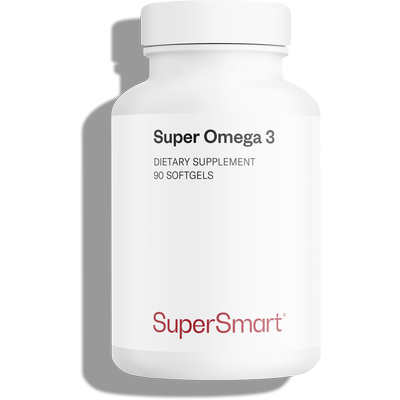18-07-2019
Omega-3 and vitamin E may offer hope to infertile couples
 The figures make for alarming reading. Over the last 50 years, there has been a decline of almost 50% in the quality of human sperm, and a fall in semen volume of around 25%, while abnormal sperm counts show a marked increase1. It’s a long-standing problem, first flagged up in the 1970s, but unfortunately the warnings issued at that time were not heeded. We are now seeing the dramatic consequences: in France, for example, 1 in 4 couples is unable to conceive after 12 months of trying, a figure that has doubled in 20 years.
The figures make for alarming reading. Over the last 50 years, there has been a decline of almost 50% in the quality of human sperm, and a fall in semen volume of around 25%, while abnormal sperm counts show a marked increase1. It’s a long-standing problem, first flagged up in the 1970s, but unfortunately the warnings issued at that time were not heeded. We are now seeing the dramatic consequences: in France, for example, 1 in 4 couples is unable to conceive after 12 months of trying, a figure that has doubled in 20 years.
How can we reverse this trend? One study published a few months ago gave little cause for optimism. It showed that lifestyle factors (alcohol consumption, smoking, exercise) had only a limited effect. Suspicions have focused on the many chemicals and pollutants present in our environment such as DEHP which is found in various plastics and acts as an endocrine disruptor.
While research on genotoxicity supports such explanations, other studies show that it is possible to take action as an individual, particularly in terms of nutrition. One such study2 suggests that supplementing with omega-3 (such as the concentrate Super Omega 3 - 500 mg) and vitamin E (such as the formulation Gamma E Tocopherols) provides spermatozoa with significant protection from lipid peroxidation, a process from which they are under constant threat. Spermatozoa are fragile because their cell membranes are rich in omega-3 fatty acids which are highly susceptible to oxidation3 and thus need effective antioxidant defences. When these are overwhelmed, the membranes lose their fluidity 4 impairing the sperm’s ability to penetrate the egg5. Supplementing with vitamin E may therefore reduce the adverse effects of oxygen derivatives on these membranes 6, while taking fish oils provides the body with a fresh supply of omega-3 fatty acids to replace those that have been compromised.
These findings will undoubtedly provide new hope to the 15% of couples for whom pregnancy has still not occurred after two years of trying.
References :
1- M. Rolland, J. Le Moal, V. Wagner, D. Royère, J. De Mouzon; Decline in semen concentration and morphology in a sample of 26 609 men close to general population between 1989 and 2005 in France, Human Reproduction, Volume 28, Issue 2, 1 February 2013, Pages 462–470.
2- Risso L, Pellegrino FJ et al. Effect of fish oil and vitamin E on sperm lipid peroxidation in dogs, Journal of Nutritional Science (2017), vol. 6, e48, page 1 of 4.
3-Lenox CE & Bauer JE (2013) Potential adverse effects of omega-3 fatty acids in dogs and cats. J Vet Intern Med 27, 217–226.
4- AITKEN R. J., IRVINE D. S., WU F. C. (1991) : Prospective analysis of sperm-oocyte fusion and reactive oxygen species generation as criteria for the diagnosis of infertility. American Journal of Obstetrics and Gynecology., 164, 542-551.
5- . AITKEN R. J., CLARKSON J. S., HARGREAVE T. B., IRVINE D, S., Wu F. C. W. (1989b) : Analysis of the relationship between defective sperm function and the generation of reactive oxygen species in cases of oligozoospermia. Journal of Andrology, 10, 214-220.
6- GRIVEAU J. F., LE LANNOU D. (1994) : Effects of ant[oxidants on human sperm preparation techniques. International Journal of Andrology, 17, 225-231.
Order the nutrient mentioned in this article
Further reading
23-05-2017
Recent months have seen repeated spikes in levels of fine-particle pollution. With each alert, so the preventive messages from public health authorities increase. But many...
Read more10-05-2017
Chinese scientists may have made a major discovery in relation to the treatment of diabetes. Initial conclusions from their research appear to confirm the benefits...
Read more07-02-2018
Can taking a supplement for just one month boost your sports performance? Apparently so, according to a recent study, as long as you choose your...
Read more© 1997-2025 Fondation pour le Libre Choix
All rights reserved
All rights reserved
Free
Thank you for visiting our site. Before you go
REGISTER WITHClub SuperSmart
And take advantage
of exclusive benefits:
of exclusive benefits:
- Free: our weekly science-based newsletter "Nutranews"
- Special offers for club members only


















